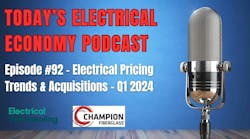Despite January decline housing still looks solid for 2014. Led by resurgence in single-family production, housing will continue its climb in 2014. But several challenges could hinder the pace of the ongoing recovery, according to the National Association of Home Builders (NAHB). “My single-family forecast for 2014 is pretty aggressive — 822,000 starts which is likely 200,000 more than 2013,” said NAHB Chief Economist David Crowe. “There are five key points to the turnaround. Consumers are back, pent-up demand is emerging, growing need for new construction, distressed sales are diminishing and builders see it.”
NAHB also said consumer confidence has returned to pre-recession levels and household balance sheets are on the mend. “Year-over-year household formations are on the rise and are now averaging 620,000 compared to just 500,000 during the housing downturn. At the height of the housing boom, the U.S. was producing 1.4 million additional households each year,” the NAHB release said.
Architecture Billings Index back on growth track in January. After consecutive months of contracting demand for design services, there was a modest uptick in the Architecture Billings Index (ABI) published by the American Institute of Architects (AIA), Washington, D.C. As a leading economic indicator of construction activity, the ABI reflects the approximate nine- to twelve-month lead time between architecture billings and construction spending. The AIA reported the January ABI score was 50.4, up from a mark of 48.5 in December. This score reflects an increase in design services (any score above 50 indicates an increase in billings). The new projects inquiry index was 58.5, down a bit from the reading of 59.2 the previous month.
“There is enough optimism in the marketplace that business conditions could return to steady growth as the year progresses,” said AIA Chief Economist Kermit Baker. “The suspension of the debt ceiling should ease some anxiety around projects for the federal government, at least for the time being. However, private sector spending should lead the construction upturn this year, which will depend more on employment growth and continued improvement in the overall economy.”








